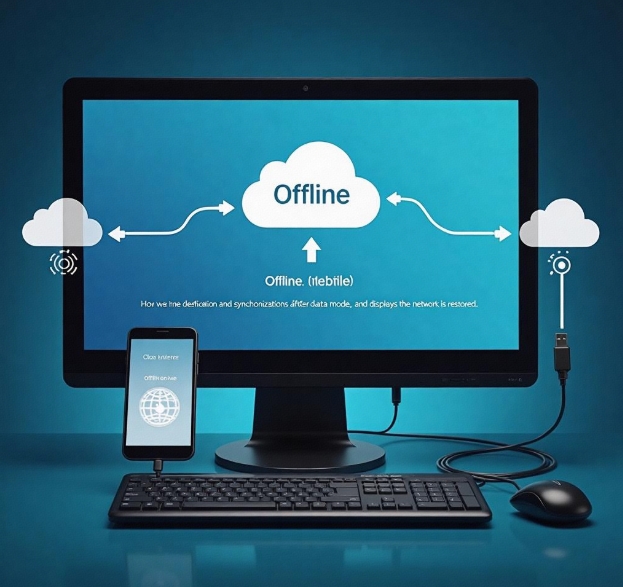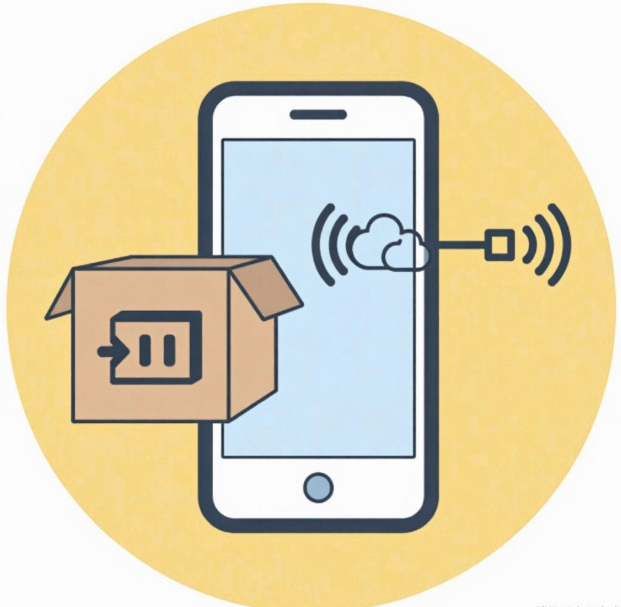Offline Functionality Design and Data Synchronization in APP Development
- latest articles
- 1.DApp Development & Customization: Merging Diverse Market Needs with User Experience 2.Analysis of the Core Technical System in DApp Project Development 3.How to achieve cross-chain interoperability in Web3 projects? 4.How does the tokenization of points reconstruct the e-commerce ecosystem? 5.How to Set and Track Data Metrics for a Points Mall? 6.What is DApp Development? Core Concepts and Technical Analysis 7.Inventory of commonly used Web3 development tools and usage tips 8.Development of a Distribution System Integrated with Social E-commerce 9.Six Key Steps for Businesses to Build a Points Mall System 10.What is DApp Development? A Comprehensive Guide from Concept to Implementation
- Popular Articles
- 1.Future Trends and Technology Predictions for APP Development in 2025 2.Analysis of the DeFi Ecosystem: How Developers Can Participate in Decentralized Finance Innovation 3.From Zero to One: How PI Mall Revolutionizes the Traditional E-commerce Model 4.DAPP Development | Best Practices for Professional Customization and Rapid Launch 5.Recommended by the Web3 developer community: the most noteworthy forums and resources 6.From Cloud Computing to Computing Power Leasing: Building a Flexible and Scalable Computing Resource Platform 7.How to Develop a Successful Douyin Mini Program: Technical Architecture and Best Practices 8.Shared Bike System APP: The Convenient Choice in the Era of Smart Travel 9.How to Create a Successful Dating App: From Needs Analysis to User Experience Design 10.From Design to Development: The Complete Process of Bringing an APP Idea to Life
In the development process of modern mobile applications (apps), users' expectations extend beyond just online functionality. Particularly with the widespread adoption of smartphones and advancements in internet technology, the demand for offline features and data synchronization is increasingly growing. Users hope to continue using apps and enjoying corresponding services even without an internet connection. When they reconnect to the network, data should seamlessly synchronize with servers and other devices. How to design these offline features and ensure efficient and accurate data synchronization has become a crucial issue in app development.
This article will delve into the key technologies, challenges, and solutions for offline feature design and data synchronization in app development, helping developers understand how to balance user experience with technical implementation to enhance app usability and stability.
I. Design of Offline Features
Offline features refer to the ability of users to partially or fully use application functions without an internet connection. The main goal of designing offline features is to ensure that users can still have a basic user experience even in poor or no network conditions. To achieve this, the design of offline features typically needs to consider the following aspects:
1.1 Offline Data Storage
Offline data storage is the foundation of offline feature design. In offline mode, all application data needs to be stored locally on the device so that users can still use it without a network connection. For example, many news or social apps save news content or social media posts in a local cache, allowing users to read or view content offline.
Methods for offline data storage can include the following:
Local Databases: For example, SQLite is a common lightweight database in mobile development that can efficiently store and retrieve offline data. SQLite is well-suited for storing structured data, such as user information and history records.
File Storage: Besides databases, some simpler data can be saved through file storage. For instance, larger files like images, videos, or documents can be stored directly in the local file system.
Shared Preferences: Suitable for storing small-scale, simple key-value pair data, such as user settings and configuration information.
1.2 Key Considerations in Offline Feature Design
When designing offline features, several important factors need to be considered:
Data Update Frequency and Volume: If the app's data updates very frequently and the data volume is large, efficient offline storage methods need to be designed. For example, only caching recently accessed data or loading data on demand.
Data Accuracy and Consistency: In offline mode, users may edit, delete, or add data, and these changes need to be synchronized with server data when connected. To avoid data conflicts, design considerations should include how to effectively handle differences between local and server data.
User Experience: The design of offline features should strive to ensure a seamless user experience. For example, when the network is restored, users do not want to see frequent prompts like "Synchronizing" or "Network Unavailable." Therefore, a smooth synchronization mechanism should be designed to allow data to sync automatically in the background without interrupting the user's normal operations.
II. Challenges of Data Synchronization
Data synchronization is another major challenge in offline feature design, especially in cross-platform applications and multi-device scenarios. The goal of data synchronization is to ensure data consistency across different devices and app versions, and to enable accurate and timely synchronization when the network connection is restored. The synchronization process may encounter the following challenges:
2.1 Data Conflicts
When users modify the same data on multiple devices or at different times, data conflicts may arise. For example, if a user modifies certain information on Phone A while Phone B is offline, and the user also modifies the same data on Phone B, the system needs to know how to handle the conflict when synchronizing both. Common solutions include:
Last Write Wins: Use the version with the latest update time to overwrite previous versions.
Manual User Selection: When a conflict occurs, prompt the user to choose which data to keep.
Merge Strategy: In some cases, conflicts can be resolved by merging data, for example, if user changes do not involve the same fields, the system can merge the changes.
2.2 Synchronization Latency and Reliability
Synchronization latency and reliability are important factors affecting user experience. Long synchronization times or synchronization failures can lead to poor user experience. To improve synchronization efficiency, the following strategies can be adopted:
Incremental Sync: Only synchronize data that has changed since the last sync, rather than resynchronizing all data. Incremental sync can significantly reduce synchronization time and data usage.
Asynchronous Sync: Perform synchronization operations in the background to avoid making users wait for sync completion. Sync tasks can be flexibly adjusted based on network conditions to ensure efficient completion when the network is available.
2.3 Data Loss and Duplication
During the data synchronization process, especially in offline mode, if a device restarts or the app crashes before the network is restored, it may lead to data loss or interrupted synchronization. Additionally, duplicate data may occur during synchronization, particularly in unstable network conditions. To avoid these issues, developers can take the following measures:
Transaction Guarantees: Use transactions to ensure the atomicity of synchronization operations—either all succeed or all fail—to prevent data loss.
Unique Identifiers: Generate a unique identifier for each piece of data to detect and remove duplicate data during synchronization.
III. Technical Solutions for Data Synchronization
In actual development, developers often use certain technical means to achieve data synchronization. These technical solutions help ensure the smooth operation of offline features and effectively manage offline data and synchronization operations.
3.1 API-Based Synchronization
By designing RESTful APIs or GraphQL APIs, applications can achieve bidirectional data synchronization with the server. Typically, the app records user operations in a local database while in offline mode. Once the device reconnects to the network, it uploads the local data to the server via the API and downloads updated data from the server.
When implementing API synchronization, developers need to consider:
Batch Operations: Avoid uploading and downloading single data entries each time; instead, process requests in batches to reduce the number of network requests and improve efficiency.
Retry Mechanisms: To ensure data is successfully synchronized, design a retry mechanism to handle temporary network issues.
3.2 Database Synchronization Tools
Some development frameworks and tools provide database synchronization capabilities, such as Firebase, Realm, and Couchbase. These tools can automatically handle synchronization between local and cloud databases, allowing developers to focus on business logic and data model design. Firebase's Cloud Firestore, Realm's synchronization mechanism, and Couchbase Lite are excellent database synchronization solutions.
3.3 WebSocket and Real-Time Synchronization
The WebSocket protocol provides a persistent bidirectional communication channel that can help achieve real-time data synchronization. Through WebSocket, the app can maintain a real-time connection between the client and server, pushing data updates in real time. When the user reconnects to the network, the app can immediately synchronize locally modified data and fetch updated content from the server via WebSocket.
IV. Summary
In app development, the design of offline features and data synchronization is not only a technical challenge but also a crucial component of user experience. Offline features ensure that users can continue using the app without a network connection, while data synchronization ensures data consistency across devices and platforms. Designing efficient and stable offline features and data synchronization mechanisms requires developers to put significant effort into offline data storage, synchronization strategies, conflict resolution, and performance optimization.
As technology continues to evolve, new offline storage methods and synchronization technologies will emerge. Developers should choose appropriate technical solutions based on specific application scenarios and user needs, continuously improving and optimizing the app's offline capabilities and data synchronization mechanisms to provide a better user experience.
-

How to Use App Development to Boost Conversion Rates on E-commerce Platforms
With the widespread adoption of smartphones and the rapid development of mobile ···
-

How APP Development Facilitates Digital Transformation and Innovation
With the rapid advancement of information technology, digital transformation has···
-

App Store Optimization and SEO Strategies in App Development
In today's rapidly evolving mobile internet landscape, apps have become essentia···

 Blockchain
Blockchain












